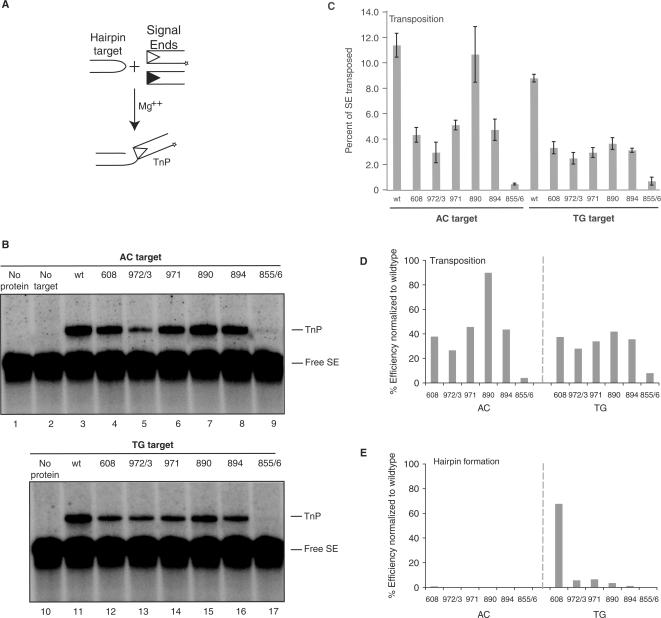Figure 4.
Several Rag1 nick-only mutants are able to transpose into different hairpin targets. (A) Schematic representation of in vitro transposition assay. Radiolabeled signal ends (*) are incubated in Ca2+ with Rag proteins and HMG. Annealed hairpin target is then added. Following incubation in Mg2+, transposition products are detected as signal ends covalently attached to the tips of hairpin targets. (B) In vitro transposition products were separated on a 15% sequencing gel, and visualized by autoradiography. (C) Quantitation of in vitro transposition assay shown in (B). Efficiency of transposition was determined as percentage of signal ends transposed by each of the mutants into AC and TG hairpin targets. Error bars represent SEM of five experiments. (D and E) Quantitation of activity of Rag1 mutants R972A/K973A, F971A, K890A, R894A, R855A/K856A as a percentage of wild-type activity in transposition into an AC or TG hairpin target (D) and hairpin formation on an uncleaved substrate with an AC or TG coding flank (E). Free SE, free (not transposed) signal ends; TnP, transposition products.

